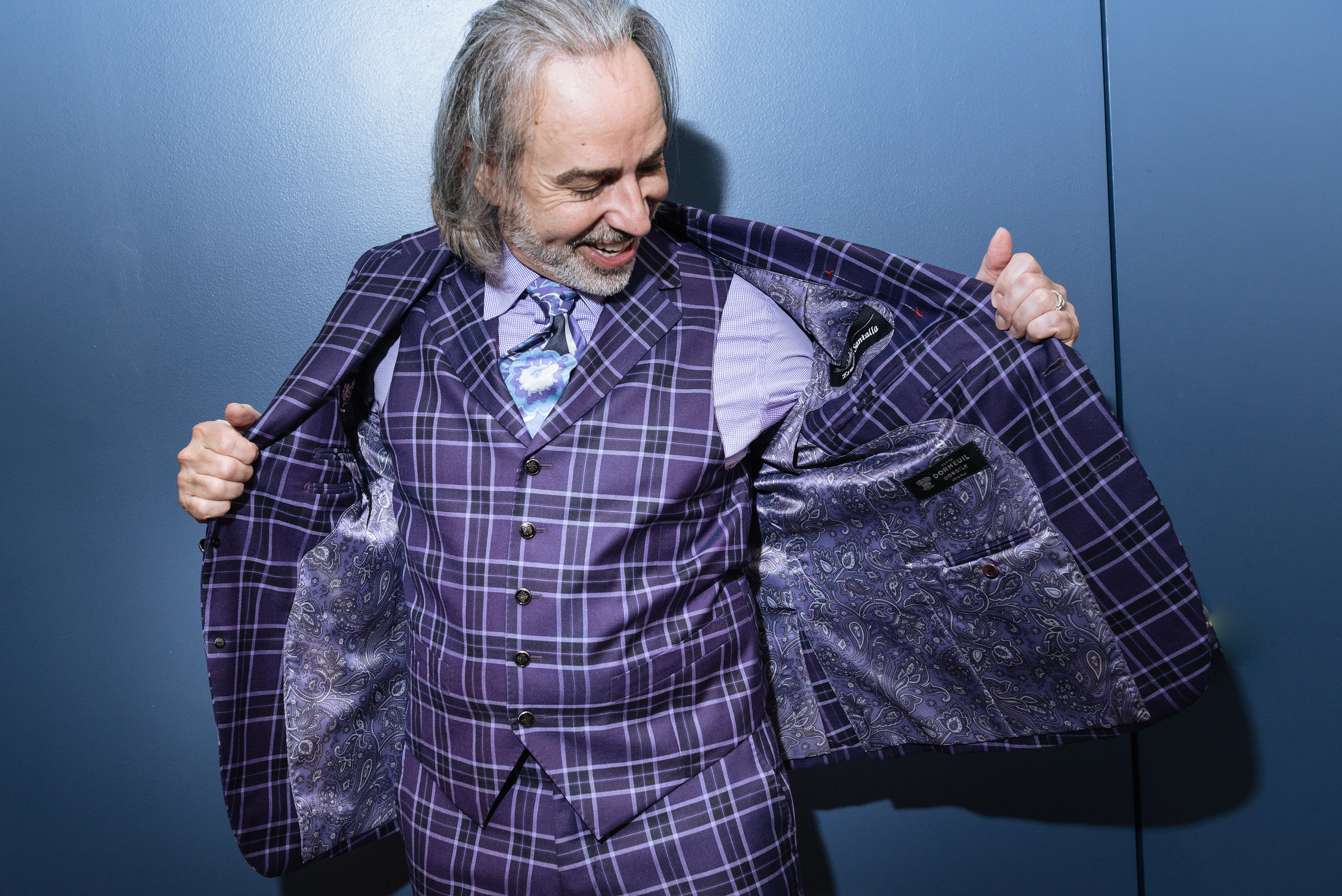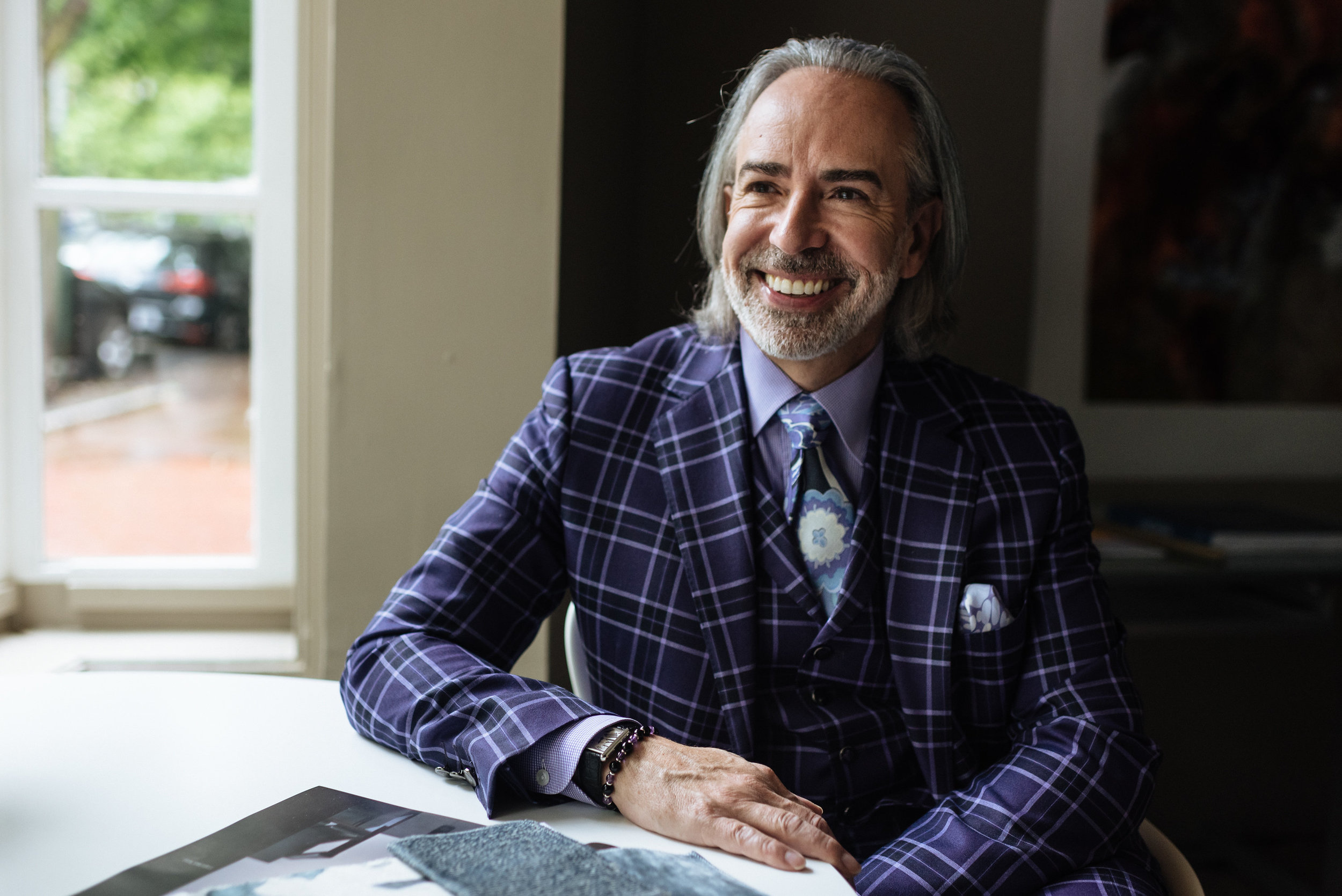‘I See Spaces That Aren’t Well Executed’
Five days before the Cuban Missile Crisis, Ernesto Santalla’s family left their home island and moved to St. Louis. Eight years later, when Ernesto was 10, they relocated to San Juan, Puerto Rico.
‘The first time I selected colors for a project, my employer said he saw how they were influenced by being from a warm climate,’ says Ernesto, an architect and interior designer. ‘I have a preference for warm colors; I will rarely go toward a cold color. I’m very aware that being brought up in the Caribbean influenced that.’
Today, Ernesto owns his own company on Dumbarton Street, offering start-to-finish services. The combination is as unique as his background—the perfect melting pot.
‘It’s not common to be both an interior designer and an architect,’ Ernesto says. ‘I was trained at Cornell as an architect. That’s my initial point of reference. But with years in the field, I saw that there’s this rift. Somebody would create this artificial endpoint, then hand it over to the interior designer. Why? This is my project!’
‘People would say architects don’t know how to select colors. Well, I can do that. I can become proficient—and so I did. There’s a whole set of design sensitivities that are required. It’s just a matter of becoming aware of them. A lot of the design principles are architectural principles.’
After years of searching for the proper explanation for what he does, Ernesto finally landed on ‘design thinking.’ It’s the focus on how things function.
‘Anything that’s designed, you consider the user experience and the longevity. It’s driven by the function it serves. Space, which is what I deal with, clearly has a function. It has to work for that. And then what it looks like is integrated into that.’
Ernesto has no desire to segregate architecture and design. More and more, he’s hired from start to finish, working on both residential and commercial projects.
‘I think residential is actually behind commercial design. I see a lot of new development in DC and even in the best of cases, I see spaces that aren’t really well executed. I’ve gotten a lot of business from going in and maximizing the potential—especially with small spaces. It’s rarely that there’s not enough space, it’s that the space you have isn’t being used properly.’
Ernesto says the greatest offenders are poorly designed bathrooms and closets, rife with wasted space. ‘In many walk-in closets, it’s a lot of walk in and not a lot of closet.’
With an approach that favors longevity over fads or what’s selling at the moment, Ernesto believes everything must work to its highest potential. Recognizing the limits of that potential is equally important.
‘Some people complain about the limitations in Georgetown with certain building regulations and I just say these are the guidelines and let’s see what’s possible within them, versus focusing on what we can’t do and moaning about it. ‘If we could only go another story,’ I hear all the time. Well, we can’t, and there’s no point talking about it. I can’t tell you how many times clients have talked about an addition. You just need to look at how to maximize the space you already have.’
Ernesto acknowledges the reputation many designers have—seemingly unwilling to stray from their own vision—and says it’s important to make his clients part of the design team.
‘Their input along the way is really important because they’re the ones who are going to clue me in on how they’re going to use the space. Everyone’s priorities are different, and at the end of the day, design is arbitrary. Why is this table round? It could have been any shape. But what’s not arbitrary is the way clients want the design to work. I always work with their wish lists and then balance it with the budget and priorities.’
More than two decades into his own business, Ernesto’s favorite project is the one he’s working on in that moment, throwing himself fully into it.
‘I don’t do things that are brain dead. I’ve done it before and it doesn’t advance my thinking. I do the marketing and the management and all of that, but it’s all at the service of allowing me to do what I want to do, which is design.’
But when you live and breathe this world, it’s hard to keep yours hands off your own home.
‘It’s a blessing and a curse because I don’t have to charge myself,’ says Ernesto, who bought a one-bedroom apartment in Glover Park in 2006. ‘I don’t have the same kind of money my clients do, so that becomes a challenge. A week after I bought my place, it was mostly gutted. There has been an evolution of the space, and I created something that is still very comfortable, that I like coming home to every night.’
So, too, does Ernesto like coming to Georgetown every morning. From the ‘breathtaking’ interior of Halcyon House to the elegant gardens at Dumbarton Oaks and the Rosewood terrace overlooking the canal, he has no shortage of architecture and design inspiration all around him.
‘The people who live in Georgetown are connected to the place and committed to keeping it alive. And then there’s the joy of knowing the people who own the places I frequent, from my dry cleaner to the shops at Cady’s Alley that are my go-to resources. I’ve developed relationships over time. I’ve made a life being around here.’
Here, in a space for Ernesto that functions to its highest potential.






